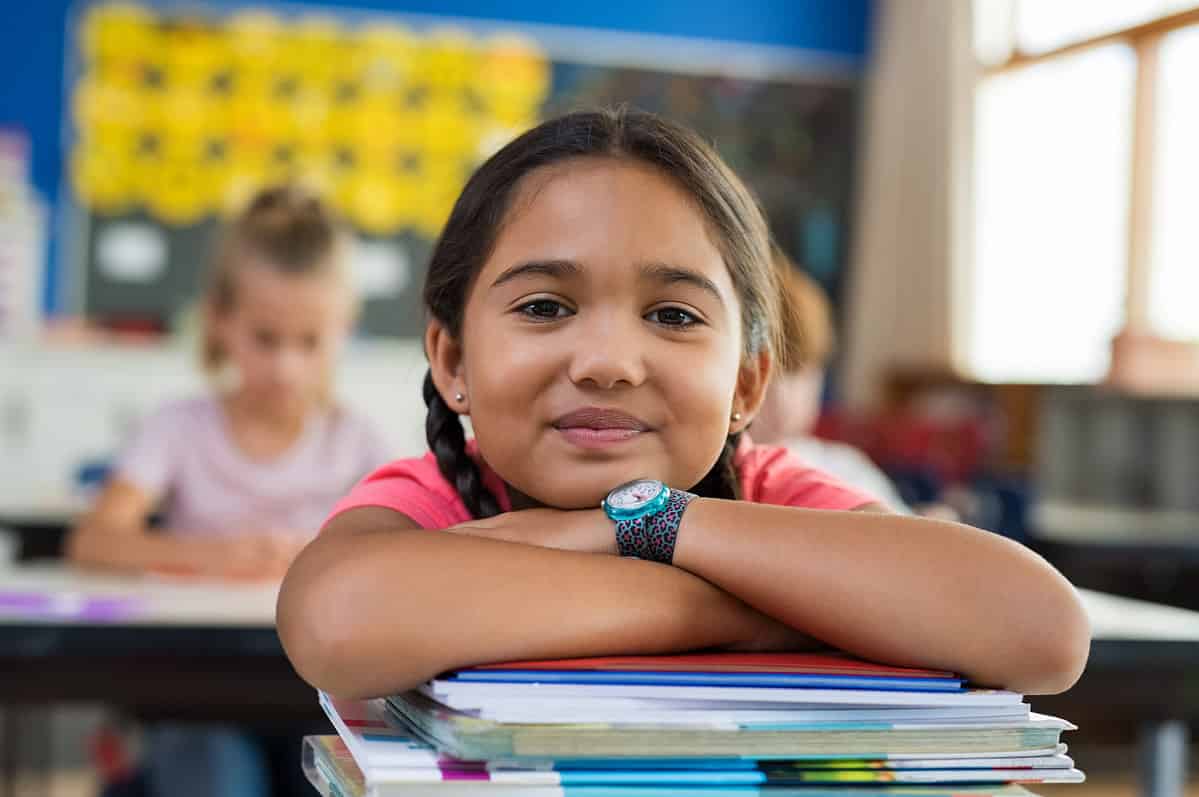The great city of Austin, Texas, is known for many incredible things. In addition to being Texas’s state capital, it also has amazing festivals, nice people, and overall, good schools. However, all educational institutions are not created equal, and today, we’ll be telling you about the worst schools in Austin today. These schools just happen to miss the mark, and while fine people are working at them, there is room for improvement.
We’ll be looking at elementary schools, middle schools, high schools, and colleges in the Austin area. When we look at elementary and middle schools, we’ll be judging based on factors like equity, test scores, and student progression through the grades. When we get into high school, we’ll look at those factors plus graduation rates and how the school is equipping the students for their time in college. Finally, when we look at colleges, we’ll be looking at graduation rates since that is the true sign of a successful school.
Worst Schools in Austin: Elementary School
In many ways, elementary schools are one of the most important building blocks for a child’s education after kindergarten. This is where they start to get the foundation for the rest of their educational career, and if they fall behind now, they could stay behind as they go through the remaining grades. While there are plenty of high-quality elementary schools in Austin, these need a bit of support.
Decker Elementary School
The first school is Decker Elementary, which is part of the Manor Independent School District. It’s a medium-sized school with about 385 students. The issues here revolve around test scores, student progress, and equity. According to GreatSchools.org, this elementary school has students who are making less academic progress compared to where they were the previous year and compared to other students in the state.
Part of that low progress is due to the test scores. Scores for classes like math, reading, and science are below the state average. For science, there’s about a 5% proficiency rate compared to the 37% average for the state.
As far as equity, when comparing low-income and underserved students with other students in the school, they seem to be falling behind, which indicates achievement gaps. There’s also an issue here with disabled students as they are chronically absent (absent 15 days or more) at 12% versus 6% for the rest of the students. There could also be more diversity at the school, as 85% of the students are Hispanic. Diversity is important because it helps students to see other points of view and learn about different cultures. As for the teachers, 100% of them are certified, but only 67% have three years of experience or more.
Langford Elementary School
Though not as bad as the last school, Langford Elementary School, which is part of the Austin Independent School District, also has some issues with test scores, progress, and equity. This is a larger school, with about 503 students. However, scores show that the students here are making less academic progress than other students in the state. The low test scores here signify that the students are starting at a lower point than their peers. Test scores at Langford are well below the state average, especially in core classes like math, reading, and science. Again, science is a sore point at this school as there’s less than a 1% proficiency.
On the equity front, there’s also a relative lack of diversity here, with a majority of students having a Hispanic background. As far as students with disabilities, 27% of them are chronically absent versus 15% for the other students. Also, there’s a difference in reading skills between students with disabilities and those without, which indicates that some student groups aren’t getting the support that they need.
Teaching is a high point here as 100% of the teachers are certified, and 89% have three years of experience or more. There’s also a fairly good student-to-teacher ratio of 14:1, which indicates that the students are getting a fairly personalized educational experience.
Pecan Springs Elementary School
Also part of the Austin Independent School District, Pecan Springs Elementary is a smaller school with about 266 students. Like the others, the students here are making less academic progress than other students in the state. Test scores here are low in math, reading, and science. Here, the reading proficiency is 21% versus the state average of 53%. The issue is that if the students aren’t getting the basics in elementary school, they’ll likely have trouble going forward.
As far as equity, there’s a fairly good percentage of diversity in the school. However, students with disabilities are chronically absent more often than the other students, which indicates that they’re not getting enough support. There’s also a difference in test scores between disabled and non-disabled kids, which is an indication that they’re not getting the attention they need.
On the teaching front, 100% of them are certified, and 87% have three years of experience or more. There is a student-to-teacher ratio of 15:1, which could be better. There’s only one school counselor for every 453 students.
Worst Schools in Austin: Middle School

©Ground Picture/Shutterstock.com
By the time your kids reach middle school, they should have a good understanding of several subjects. The teachers in middle school are supposed to help them build on that knowledge. Many middle schools in Austin are top-notch. However, the schools below have some issues with testing and student progress.
Webb Middle School
First is Webb Middle School, which is part of the Austin Independent School District, and it has 612 students. When compared to the other middle schools, the students here are making far less academic progress than other students in the state and also when compared to how they were doing last year. There are major issues here when it comes to test scores. The scores in math, science, and social studies are in the single digits. Scores in reading are also low.
As far as equity, there’s a relative lack of diversity in the school. Test scores are also lower for low-income students than they are for those considered “not low-income.” That indicates that not all kids are getting equal attention. There’s also issues when it comes to kids with disabilities. Those with disabilities are suspended more often and are chronically absent more often than students that aren’t considered disabled. Any time out of school is bad news because it means the kids aren’t learning. That fact can be even worse for kids with disabilities.
At this school, 98% of the teachers are certified, and only 81% of them have three years of experience or more. On the good side, there is a student-to-teacher ratio of 12:1 and a student-to-counselor ratio of 221:1, both of which are better than the state average.
Dobie Middle School
Also in the Austin Independent School District, Dobie Middle School has 649 students in grades 6-8. This is another instance where the students are making far less progress than other students in the state, according to GreatSchools.org.
The low test scores indicate that the students are falling behind where they should be at this point. The test scores are low in subjects like reading, math, social studies, and science. These scores are well below the state average, and that suggests that the students are not performing at grade level. This is also the time when some students start taking advanced courses, like Algebra 1. However, while the pass rate for Algebra 1 is 87% at this school, only 16% of students are participating.
As for equity, low-income students are falling behind the other students when it comes to test scores, which indicates that the school has achievement gaps. When it comes to discipline and attendance, students with disabilities are suspended and are chronically absent more often than those kids that aren’t considered disabled. Students with disabilities are also falling behind the other students when it comes to their test scores.
Finally, 96% of the teachers are certified, which is below the state average of 98%. Also, 84% of the teachers have three years of experience or more, which is in line with the state average.
Mendez Middle School
The final score in the Austin Independent School District that we’ll discuss is Mendez Middle School, which has 573 students. Again, the students are making far less academic progress than they should, and the low test scores are a big indicator of that. Scores in reading, math, social studies, and science are falling well below the state average. Many of the students aren’t performing at grade level. Very few students here are taking advanced courses like Algebra 1. In fact only 11% are taking the class. However, those who do take it are excelling. There’s a 92% pass rate.
Many of the same issues that we see at the other schools show up here when it comes to equity. There’s a relative lack of diversity. Low-income students are getting lower test scores than the other students. Also, like the other schools, students with disabilities are suspended and are chronically absent more often than the rest of the students. Test scores in reading and math are also lower for students with disabilities than the other students.
As for the teaching, the good news is that there’s a very respectable student-to-teacher ratio of 11:1, which means that the students are getting fairly individualized attention. However, while 97% of the teachers are certified, only 54% of them have three years of experience or more, which means they may not have the necessary experience to successfully teach the students.
Worst Schools in Austin: High Schools
It’s essential that your kids are put into a good high school. For many students, this may be the last round of education that they’ll receive before they enter the real world, so high school must prepare them. Many other students may be going to college after this, so they need to have the proper groundwork. In addition to looking at test scores, we’ll also be gauging how well these high schools prepare the students for college. There are only 112 high schools in Austin, and we’ll look at a few that miss the mark.
Travis High School
This school, which is part of the Austin Independent School District, has 1,243 students in grades 9-12. Just like many of the elementary and high schools, students in this high school are making far less academic progress compared to other students in the state and compared to where they were last year.
Test scores at this score are relatively low, even in core classes like English, math, biology, and US history. In all categories, the test scores are below the state average. There’s also a major lack of students taking advanced courses like AP math and AP science. That’s an issue because these classes can prepare the students for college and beyond.
As far as college preparedness, there are some areas for improvement. The good news is that this school has a 94% graduation rate. However, only 35% of the students at this school are pursuing college or a vocational program. Very few students are taking the assessments necessary to get into most colleges. Only 2% of students are taking the ACT, and while 99% are taking the SAT test, their average score is 855, which is below the average of 1002 that most colleges look for when accepting applicants.
On the equity front, low-income and underserved students are falling behind the other students as far as college readiness, test scores, and student progress. Also, students with disabilities are suspended and are chronically absent more often than those without disabilities.
John B Connally High School
This high school is part of the Pflugerville Independent School District, and it has 1,761 students in grades 9-12. Many of the same issues exist here. Test scores could be worse, but they’re still lower than the state average in the subjects of English, algebra, biology, and US history. There are also few students taking advanced courses, with only 9% taking AP math and 13% taking AP science.
The school has a 90% four-year graduation rate. However, only 41% of the students intend to attend a college or vocational school. Of those students, 99% are taking the SAT test, but they’re getting an average score of 924, which is below the 1002 average. On a bright note, the average score for students taking the ACT test is 22, which is above the average score of 20.
This school also has issues with equity, as low-income and underserved students are falling behind when it comes to college readiness, test scores, and student progress. Low-income students also fall behind when it comes to college readiness. Students with disabilities are suspended and chronically absent more often than students without disabilities.
LBJ High School
Finally, there’s LBJ High School, which is part of the Austin Independent School District. Students here are also making far less progress than other students in the state, and they’re not improving greatly from year to year. Test scores are low in English, biology, algebra, and US history, among other subjects.
The school does have a solid 95% four-year graduation rate, which is above the state average. However, those who graduate may not have the tools necessary to get into a good college and succeed there. Of the students taking the SAT test, the average score is 832, and that’s well below the average of 1002. The average score on the ACT is 21.
Part of the issue here may be the teaching. While they have the best intentions, and 94% of them are certified, only 77% have three years of experience or more.
Worst Colleges in Austin

©PeopleImages.com – Yuri A/Shutterstock.com
There are several factors to consider when looking at the worst schools in Austin on the college level. One is the graduation rate because if kids aren’t graduating, it’s often because they aren’t getting the support they need. The schools with the worst graduation rate in Austin include:
- Austin Community College District – 8.2% Graduation Rate
- Virginia College Austin – 20.4% Graduation Rate
- Huston Tillotson University – 26% Graduation Rate
- Concordia University Texas – 37.2% Graduation Rate
Conclusion
This concludes your list of the worst schools in Austin. It’s important to remember that there are plenty of high-quality schools in the city, but some just need a little help. If you’re a parent, be sure to do your research and find the best school for your child’s needs.
The image featured at the top of this post is ©dk_photos/ via Getty Images.

